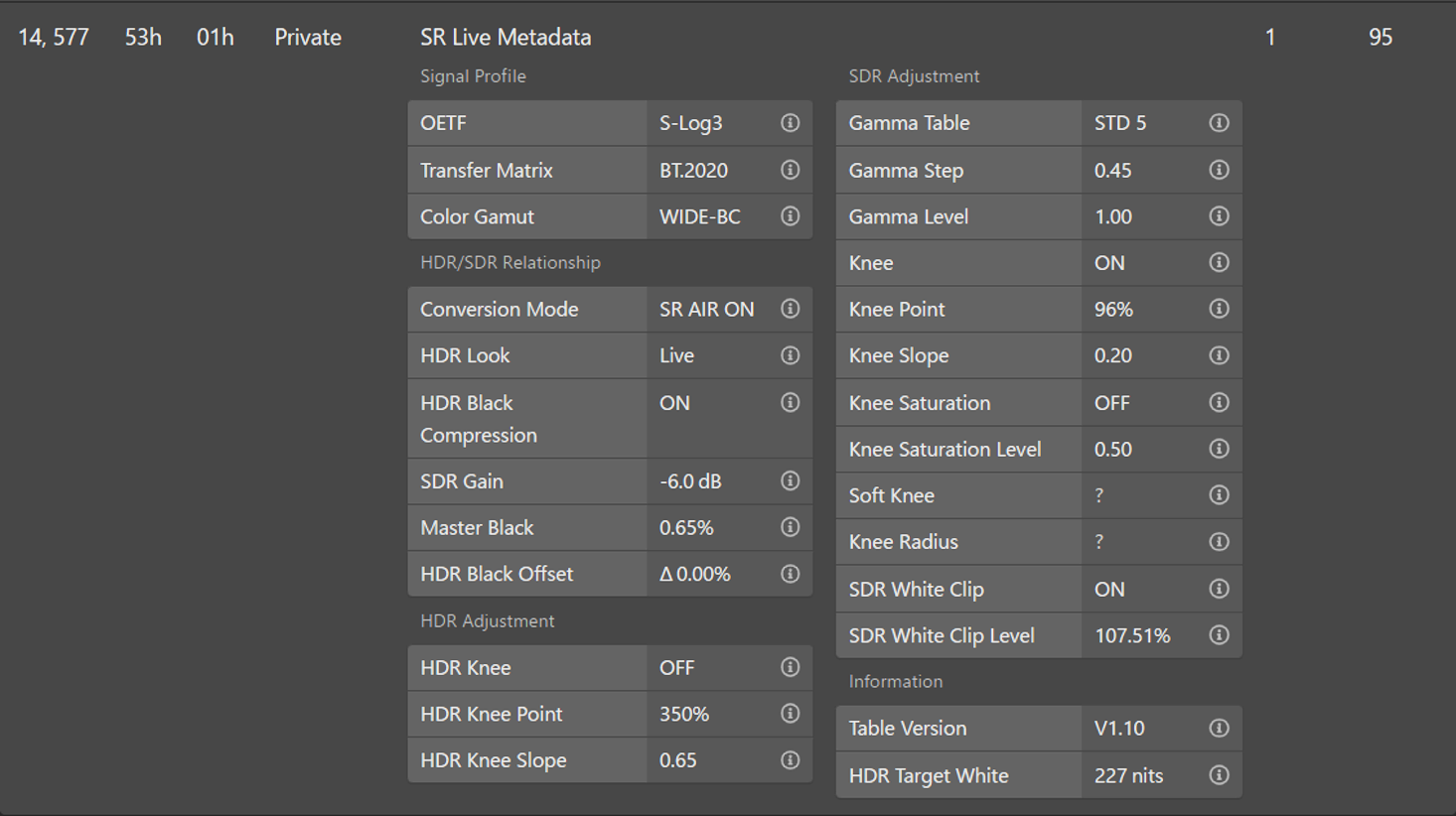Leader Electronics announces major additions to the feature set of the LVB440 IP Analyzer. The instrument’s IP traffic and signal monitoring resources are now supplemented by signal generation tools plus the ability to monitor and analyze SR Live Metadata*1. These follow on from the expansion announced in Q4 2021 which added support for JPEG XS ST 2110-22 compression analysis, closed captioning measurement, 7.1 and 5.1 surround sound, and loop-mode continuous capture of data packets.
With its new signal generation facilities and SR Live Metadata, the LVB440 offers increased efficiency in evaluating network performance. Operators can create placeholder reference signals locally using the integral GUI or remotely via NMOS. SDR and HDR signals such as chroma bars can be configured for specific video resolutions or refresh rates, including a user-definable video or audio ident, saving time during system setup or alteration. Placeholders can also be created to represent video and audio feeds that will be required later in the production timeline. Network connections such as remote OB or studio sources can then be tested before the start of a live transmission.
Leader added support for SR Live Metadata decoding and display to its ZEN series waveform monitors and rasterizers in Q4 2019 and is now extending this capability to the LVB440 for use in IP network evaluation. SR Live for HDR*2 forms part of the broadcast production workflow when content is converted from 4K HDR to HD HDR. Using metadata sourced from each camera, the LVB440 allows production staff to identify and correct potential issues quickly and effectively.
Housed in a compact 1U, the LVB440 allows efficient analysis of SD, HD, HD HDR, 4K and 4K HDR data flow over media networks of any size. Designed to monitor and analyze high-bitrate media traffic in broadcast production studios, OB vehicles, master control facilities and transmission networks, the analyzer supports data rates of 10, 25, 40 and 50 gigabit/s, extending up to 100 gigabit/s via dual interfaces. The core processor is more than capable of handling the 48 gigabit/s data rate required for full bandwidth source 8K.
The LVB440 is controlled via an HTML-5 browser and provides full support for up to eight local or remote users. It gives production teams the resources needed to perform real-time checks on large numbers of streams and multiple resolutions in parallel at multiple locations. Operators gain the ability to survey every media transport layer of an IP network simultaneously, allowing issues to be rectified before they impact the quality of service experienced by program viewers.
When connected to primary and secondary networks, the LVB440 can monitor and analyze redundancy within the SMTPE ST 2022-7 standard which is used to ensure seamless protection switching. Tools are also provided for PTP clock analysis, including clock source detection, timing accuracy and individual flow path-latency. SMPTE ST 2110, ST 2022-6, and ST 2059-2 PTP standards as well as Networked Media Open Specifications are also supported.
Intuitive packet display analytics including single or multiple stream correlation allow operators to identify errors quickly and easily. Media metadata and deep packet analytics can be displayed. Also provided are traditional colorimetry measurement tools, including a vectorscope with ITU Rec. 601, 709 and 2020 compatibility for checking chroma saturation issues that can arise in mixed standard and HDR environments.
A flow-overview function allows any data flow or signal stream on a network to be bonded into a single viewing configuration comprising video, audio and ancillary data. This combination can then be stored as a preset for later recall up to eight stereo-pair audio channels can be metered and monitored. The AES67 standard for audio over IP and audio over Ethernet interoperability is supported.



